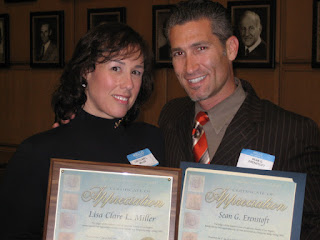Sean Erenstoft Lectures on Authenticating
Web Evidence
Internet evidence is an inherently
difficult matter to deal with as a jurist.
The inherent problem is that websites are not typically monitored for
accuracy and nothing contained on the web is under oath or even subject to
independent verification.
Simply put, "hackers can
adulterate the content on any web-site from any location at any
time." (St. Clair v. Johnny's Oyster & Shrimp, Inc., 76 F.
Supp. 2d 773, 774-75 (S.D. Tex. 1999)).
Just a few years ago, California courts
struggled with the foundational concerns voiced in the St. Clair holding when lawyers observed that even a digital
photograph "can be changed to produce false images" without
"skill, experience, or even cognizance" by using computer programs
such as Adobe Photoshop. (People v. Beckley, 185 Cal. App. 4th 509, 515
(2010)). The court proceeded to exclude MySpace photographs from evidence.
In Los Angeles, at least one prosecutor
has relied upon "To:" and "From:" lines in purported email
exchanges to charge the supposed sender with cyber-stalking. As a criminal defense attorney, I challenged
the premise of the lawsuit by asking the prosecutor to provide the I.P.
addresses (the internet source-code) of the emails to determine their
origin. When it was discovered that the
prosecutor was unable (or likely unwilling) to inquire about the I.P.
information, she was forced to withdraw the lawsuit.
Distrust of new technology is nothing
new and courts are searching for a less-formalistic method to allow for the
admission of electronic data. Indeed,
courts seem to be settling on the following formula: "As long as the evidence would support a
finding of authenticity;" and any "conflicting inferences [go to] ...
the document's weight as evidence, not its admissibility." (People
v. Valdez, 201 Cal. App. 4th 1429, 1435 (2011)).
Many California courts have embraced
this progressive mentality by simply requiring the proponent of the evidence to
make "a preliminary showing the writing is what it purports to be." (People
v. Boner (2012) San Francisco, Case No.: SF108698A -- not officially
reported).
More preferred however, is the view
articulated by the majority of judges who require definitive proof that
Internet evidence was not "faked" or "manipulated."
The Three Methods of Authentication:
The first is expert testimony used to
show that the evidence is free of contamination or corruption and is what it
purports to be. The second method is
testimony of a witness responsible for the creation and/or knowledge of the
content, such as the person who took the suspect picture or a webmaster who
created or formed the website. And
third, the court may rely upon circumstantial evidence of reliability to meet
the burden of proof. In California, the
primary methods the courts turn to is set forth in our Evidence Code at § 1410.
The first two methods (experts and
percipient witnesses) are usually not available. Indeed, detecting modifications of electronic
evidence is a very difficult feat and requires sophisticated forensic
methodology; and key-stroke analysis is practically impossible. The third methodology, circumstantial
evidence, is the focus of this article.
Leaving authentication issues to the
discretion of the court based on whether an attorney can meet the foundational
burden appears to be the direction we are going. Focusing on the content and context of the
material, it seems that proponents of evidence must now prove authenticity by
providing the court with supporting evidence consisting of "distinctive
characteristics," "external corroborating evidence," and whether
the proponent of the evidence has any better method to prove the material's
source.
For example, if the proponent can
exclude the possibility of access by third parties to a website or email via
the existence of a password, the source of an email may be sufficiently
authenticated. In terms of context,
perhaps counsel can offer other, previous, exchanges by and between parties and
unique or distinctive characteristics can be presented. Notably, I.P. addresses and the ability to
include or exclude a possible source of material remains the most reliable
method of proving the source of electronic data insofar as such material is
usually, ultimately, sourced to a single laptop or server. If that server or computer is in possession
of the proponent and was password protected at the time of the missive or
posting, a court can find a foundational basis in which to proffer electronic
evidence sourced to that computer or server.
Despite growing acceptance and
flexibility of California courts to rely on circumstantial evidence to authenticate
Internet evidence, the precise level of proof remains subject to the whims of
the individual judge. For example, an
appellate panel affirmed the exclusion of a Facebook photograph because a
witness had no personal knowledge about who took the photo, or the name of the
person who posted it.
At present, a plethora of objections
remain available to what is effectively "out of court evidence." Indeed, the hearsay objections and the myriad
of exceptions to its admissibility remain.
Of primary concern to me remains the ability of the proponent of
electronic evidence to prove the basic foundational basis of evidentiary
offerings. Most troublesome is when a
prosecutor relies on such evidence as the basis for filing charges (or seeking
an indictment) against a suspect without the evidence having been minimally
challenged for authenticity.







No comments:
Post a Comment